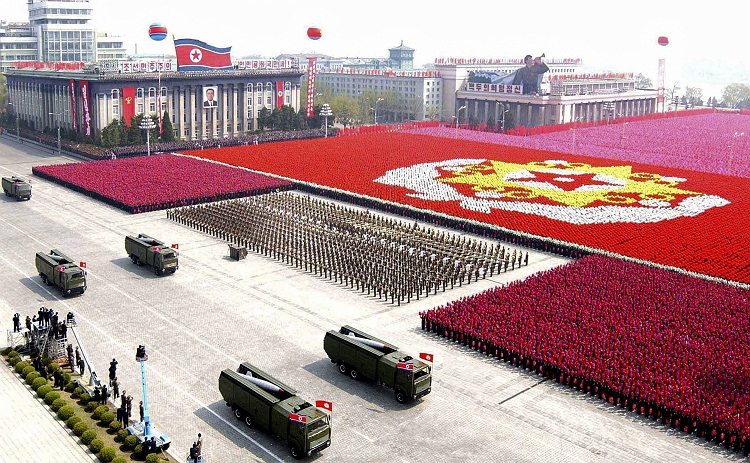North Korea has been testing engines for an inter-continental ballistic missile, a US think-tank said Friday, as Pyongyang announced a top military reshuffle that coincided with signs of a looming nuclear test.
The US-Korea Institute at Johns Hopkins University said satellite images of the North’s Sohae rocket launch site suggested one “and maybe more” recent tests on the engine of what is probably the first stage of a road-mobile ICBM called the KN-08.
It was the latest in a series of similar tests — dating back to mid-2013 — on a missile with a targeted range of up to 11,000 kilometers (6,800 miles), the institute said on its closely followed website, 38 North.
“The next technically logical step… would be a flight test of the entire system,” it said.
The successful test of an ICBM capable of reaching the continental United States would take the nuclear threat posed by the North to an entirely new level.
Experts believe three nuclear tests have brought the North closer to mastering the miniaturisation techniques required to place a nuclear warhead on a missile.
And there are signs it is preparing a fourth test, with multiple analyses of recent satellite images all noting stepped-up activity at the North’s Punggye-ri nuclear test site.
“All these activities are consistent with the view that a (nuclear) test or tests will occur soon,” the Washington-based Institute for Science and International Security said in its latest assessment on Friday.
Missile delivery has often been cited as the main weakness of the North’s nuclear weapons programme.
It has yet to test its medium-range Musudan missile with a range of up to 4,000 kilometers, let alone an ICBM.
In December 2012, it put a satellite in orbit with a rocket launch that was widely condemned as a disguised ballistic missile test.
That launch marked a significant step forward, but the rocket lacked the re-entry capability required of a functioning ICBM.
Models of the road-mobile KN-08 missile were displayed in North Korean military parades in 2012 and in July last year.
But several analysts ridiculed what they saw as crude mock-ups, with at least one respected aerospace engineer labelling them technically preposterous and a “big hoax”.
– National priority –
If there is disagreement over how close the North might be to a reliable, working ICBM, there is no doubt that developing one remains a national priority under the leadership of Kim Jong-Un.
On Friday, the North announced that Choe Ryong-Hae — widely seen as Kim’s effective number two — had been replaced as political chief of the military by Hwang Pyong-So.
“To all intents and purposes, this makes Hwang, who also has close personal ties to Kim Jong-Un, the second most powerful man in the country,” said Michael Madden, author and editor of the NK Leadership Watch website.
Hwang’s appointment came just days after KCNA reported his promotion to the rank of vice marshall on April 28 — a rank shared with Choe and just four others.
It was not immediately clear what had become of Choe, who holds a number of other top positions and was recently appointed vice chairman of the National Defence Commission.
There were multiple reports earlier this year that Choe had been arrested and possibly purged after he dropped from public view for three weeks — an unusually long absence for such a senior figure.
His reappearance in March, alongside Kim, led to speculation that his disappearance might have been due to health problems.
“I don’t think we can say Choe has been purged, but he’s clearly been moved aside, possibly for health or other reasons,” said Yang Moo-Jin, a professor at the University of North Korean Studies in Seoul.
Ranking the leadership is North Korea is often a matter of educated guesswork, given the complex official and personal networks that determine genuine power in Pyongyang.
“In one way, there is no real ‘number two’,” said Dan Pinkston, North East Asia Deputy Project Director with the International Crisis Group in Seoul.
“There’s the number one, and then there’s everybody else,” he said.










